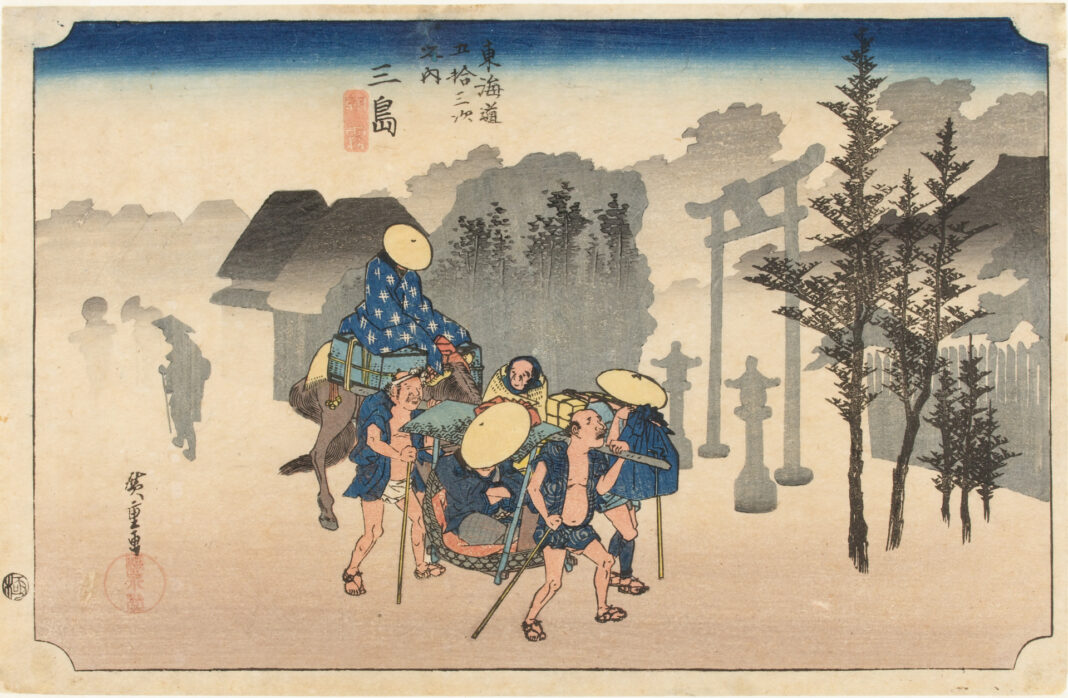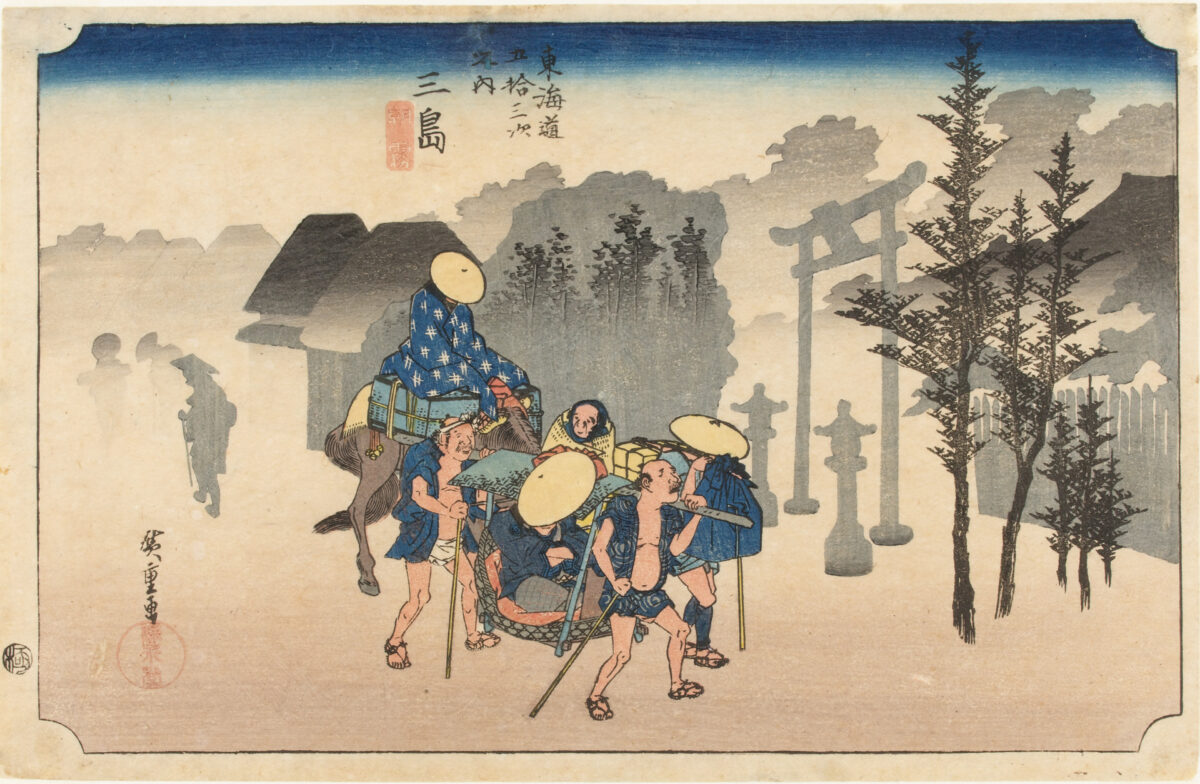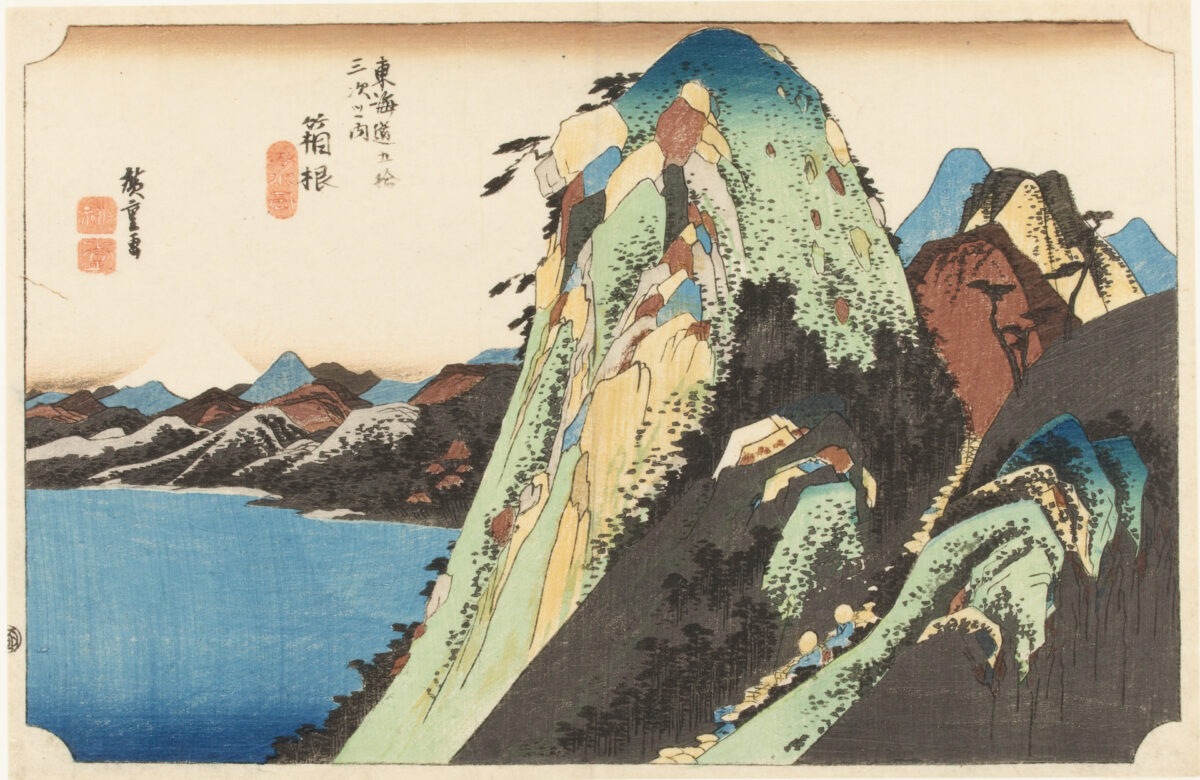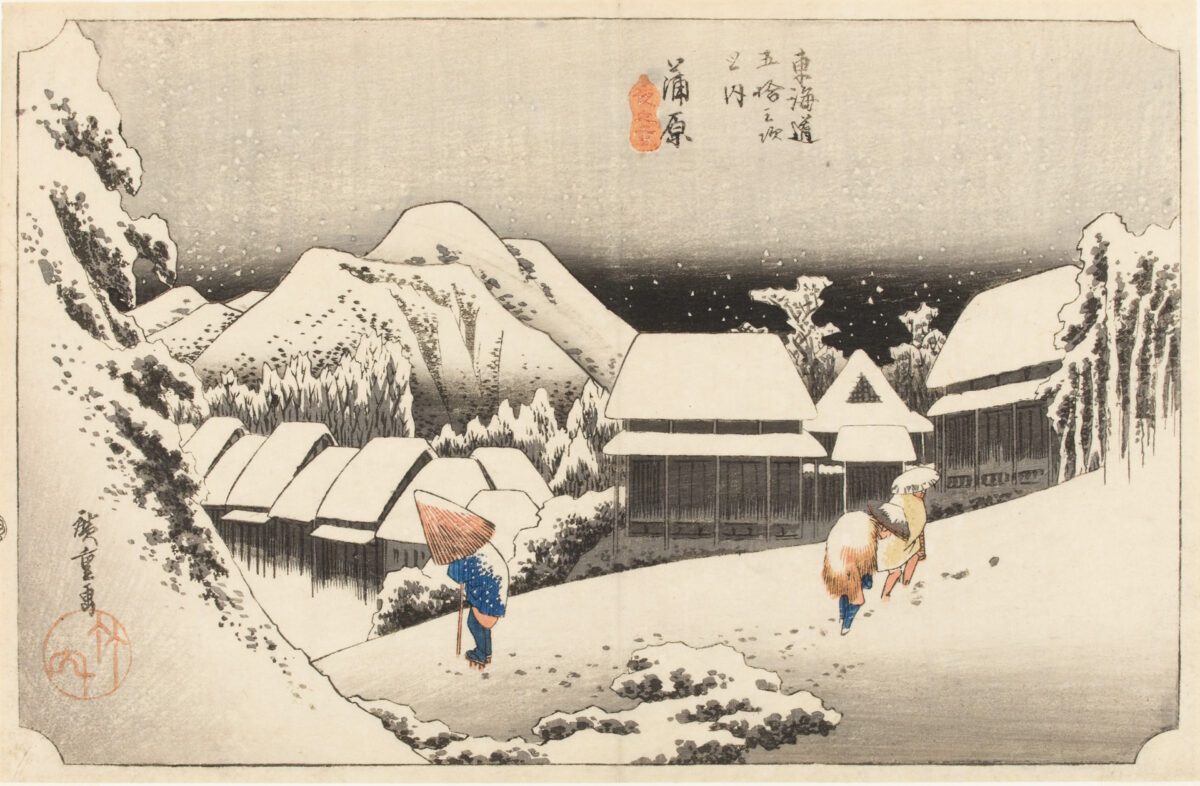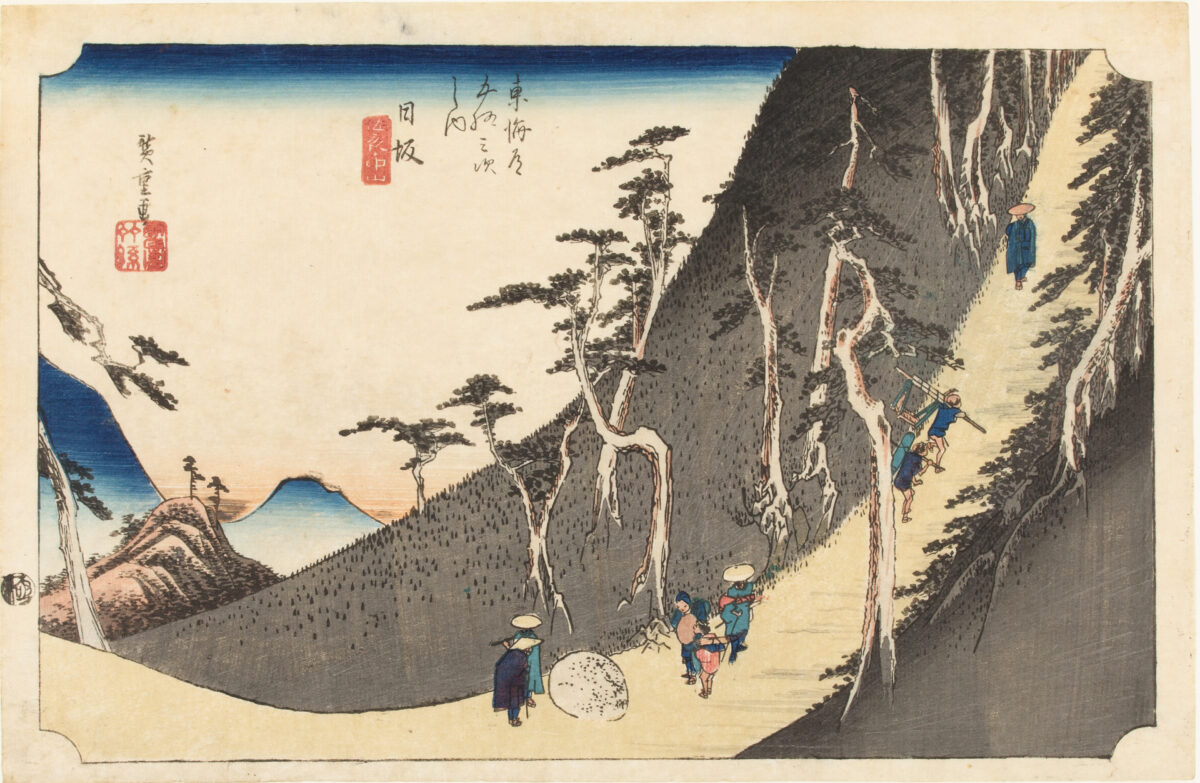OLD TOKAIDO HIGHWAY
With 22 post stations in Shizuoka the Old Tokaido Highway, an ancient road linking Tokyo to Kyoto, literally paved a way for travelers to Explore this amazing prefecture
In the late 16th century near the beginning of the Edo period, the famous Shogun (and Shizuoka resident) Tokugawa Ieyasu built what was to become the mega city of Edo (now known as Tokyo) out of swamp land and designated it as Japan’s new capital.
However, the Emperor of Japan remained in Kyoto and remained as the spiritual center of the country.

Because of this geographical split, the Tokaido route “Eastern Sea Road” linking the two places rose in prominence and became vital to connecting the two main centres of political, religious and economic power.
For centuries Japanese used the Tokaido route to travel, trade and tour between the major centres.
As a result there was a steady flow of foot traffic along this route which in turn increased the number of businesses such as restaurants, supply stores and accommodation established to cater to the needs of the travelers.
Shizuoka had a total of 22 established ‘Shukuba’ or stops on the Tokaido Road and towns / cities grew up and flourished around each of these stops.
Many of these towns, such as Mishima, Numazu, Shizuoka City and Kakegawa still exist and are easily accessible from modern bullet train stations along the modern Tokaido Line.
…the genius of the Japanese race is manifest in its roads.
The Thousand Autumns of Jacob de Zoet, set in 1800, David Mitchell
The Tokaido Highway runs from Osaka to Edo – from the empire’s belly to the head, if you will – and knows of no equal, I assert, anywhere on earth, in either modernity or antiquity.
The road is a city, fifteen feet in width, but three hundred well-drained, well-maintained, and well-ordered German miles in length, served by fifty-three way stations where travellers can hire porters, change horses, and rest or carouse for the night.
TOKAIDO HIGHWAY “JUKU”
The ancient Tokaido Highway follows Shizuoka Prefecture’s winding Pacific coastline and expertly juxtaposes the modern and ancient sides of Japan that the country has come to be known for.
Along the original Tokaido Highway there were a total of 53 Post Stations or ‘Shukuba’ / ‘Juku’. 22 of these post stations are located in Shizuoka Prefecture.
The first Post Station in Shizuoka is near Mishima Station and and the last one is Shirasuka Post Station close to the historic Arai Sekisho Checkpoint in Hamamatsu.
Although much of the original road has become a casualty of modern progress, with many of the old roads becoming new tar-sealed highways and train lines to carry the modern traveler between Tokyo and Kyoto, it is still possible to follow in the footsteps of ancient travelers.
Along the Shizuoka leg of the Tokaido you can still catch a glimpse of what inspired artists and travelers all those years ago as they made their journey along this famous road.
Edo-period travelers would either have started or finished their Shizuoka leg of the Tokaido traveling between Mishima City and Hakone along what is known as the Hakone Hachiri.
Remnants of the old road are still similar to what they once were and it is this leg of the journey that is perhaps the best place to start in order to understand what traveling along this road would have been like 300+ years ago.
THE MODERN TOKAIDO
Today, the Tokaido Shinkansen is the modern evolution of the historical highway, and throughout Shizuoka, the route is alive with activities and attractions to explore.
Fast forward 350 years to 1964, and the establishment of the Tokaido Shinkansen.
The line was built at rapid speed and in time for the 1964 Tokyo Olympics, and signified for many the success of Japan’s post-war recovery.
Originally, the train line was called the New Tokaido Line in English as it follows very closely the route of the ancient highway.
In Japan, these travelling routes have been popular for centuries, used to facilitate the flow of people, goods, and information between major centres, and this tradition continues today.
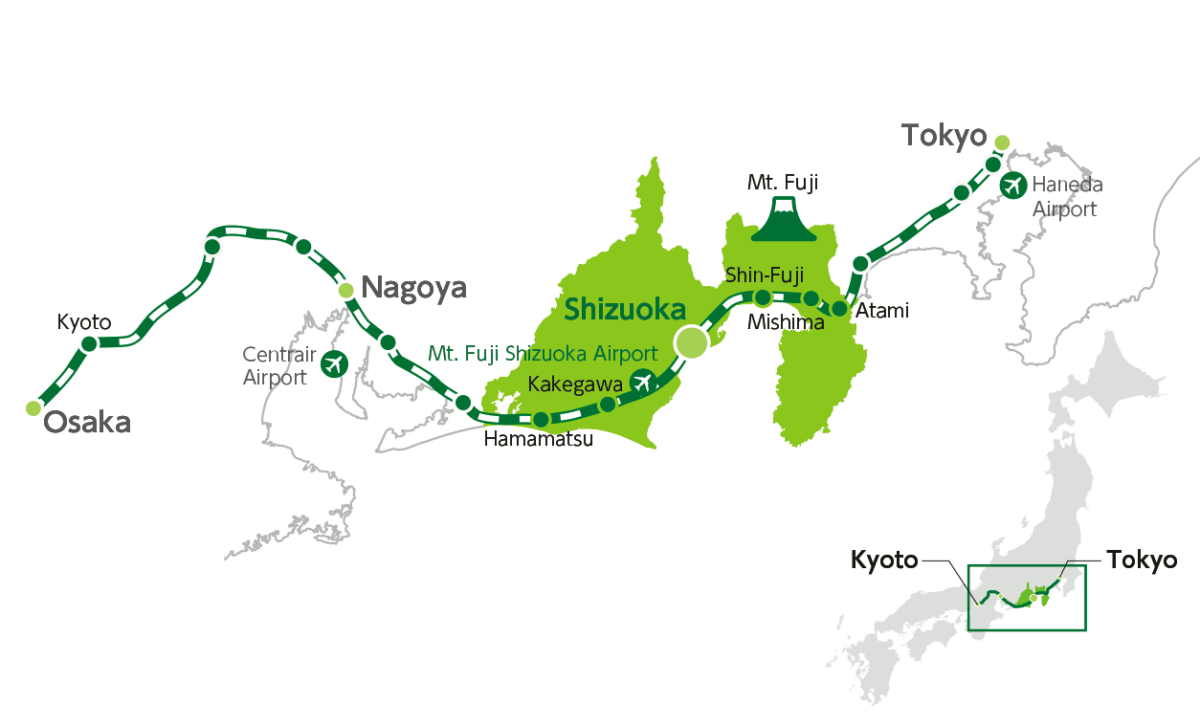
Today, the Tokaido route is more than just a shinkansen line and space-age way to travel between Tokyo and Kyoto, it is, arguably, the most important of all the travelling routes in Japan.
The Tokaido route has a vast array of historical heritage to see, and amazing activities to experience.
Intrepid explorers walk the Tokaido route, enjoying the traditional inns and a taste of ancient Japan, or stop off in cities like Shizuoka to experience performing arts festivals and explore the modern side of Japan.
Shinkansen Stations
TOKAIDO ROAD “UKIYOE”
The Ancient Tokaido Road was made famous Japanese Ukiyoe woodprint artists Utagawa Hiroshige & Katsushika Hokusai who created some of Japan’s most iconic imagery from the 17th century and are said to have influences world-class Western painters such as Claude Monet and Vincent van Gogh.
The ancient side was captured beautifully by 19th century ukiyoe artist Hiroshige, who painted a scene of each of the 53 nightly inn stops along the ancient Tokaido Highway.
Each of the 22 stops in Shizuoka were portrayed through Hiroshige’s work and he was also responsible for some of the more well known illustrations in the series of picaresque novels, written by Jippensha Ikku, known as Tokaidochu Hizakurige which depict the travels of Yaji and Kita from Kyoto to Edo (Tokyo) along the Tokaido Highway during the Edo Period.
It is said that these books were not only the first examples of Japanese ‘Manga’ but also represented some of the first ever tourism guidebooks in the World.
